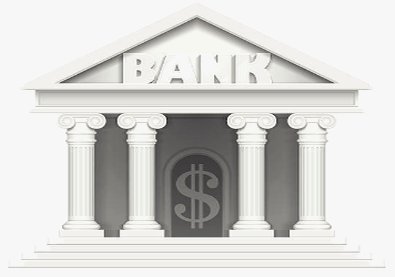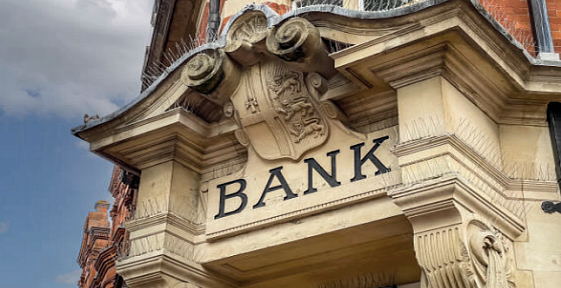Accredited InvestorsAltcoinAnatoli UnitskyAnti-Money Laundering (AML) In CryptoAPIArbitrageArtCoin TokenArticle DirectoryASICAuction Terminology GlossaryBasics of Stock Market InvestingBear MarketBest Crypto Payment Provider In the WorldBitcoinBlockchainBlockchain ConfirmationBlockchain Consensus MechanismBlockchain ForkBlockchain GlossaryBored Ape Yacht ClubBuild a Business That OutperformsBull MarketBuying SkyWay SharesByzantine Fault Tolerance (BFT) ExplainedCasascius CoinCentral Bank Digital Currency (CBDC)Centralized Crypto ExchangeCoinCoinsetCold WalletCollateralCommodity Futures Trading Commission (CFTC)Cross-Chain TechnologyCRUCrypto ExchangeCrypto GlossaryCrypto JokesCrypto Terms to KnowCrypto TickerCryptocurrencyCryptographyCryptojackingCryptounit BlockchainCryptounit GlossaryCryptounit ProgramdApp (Decentralized Application)Dead CoinDecentralized Exchange (DEX)Decentralized Finance (DeFi)Difference Between Bitcoin and EthereumDifferent Ways of Investing MoneyDigital CurrencyDistributed LedgerDo Your Own Research (DYOR)Dollar Cost Averaging (DCA)Dow Jones Industrial Average (DJIA)EncryptionERC-20ERC-721EthereumEvoScentFear Of Missing Out (FOMO)Fear, Uncertainty and Doubt (FUD)Fiat MoneyFNT Fintech CompanyGenesis BlockGlobal Unit PayGlossary of Banking TermsGlossary of Business TermsGlossary of Financial TermsHalvingHODLHot WalletHow Do I Start InvestingHow Rich is Satoshi Nakamoto?How to Create a BlockchainHow to Find Private InvestorsHow to Get Into FintechHow to Program Smart ContractsI Am Thrilled to Be a Part of This Global ProjectInitial Coin Offering (ICO)Initial Public Offering (IPO)Initial Token Offering (ITO)Innovation Basalt TechnologyInnovative Transportation TechnologiesInternational Bank Account Number (IBAN)Investing in Gold Mining StocksInvesting in Gold MiningJagerJoy of Missing Out (JOMO)Know Your Customer (KYC)LedgerLiquidity in CryptocurrencyMaker and Taker Fees in Crypto TradingMarket Capitalization (Market Cap)Meme CoinMetal Credit CardMetaMaskMillenials Now Have Access to Generational WealthMy Best Investment EverNew Digital EvolutionNFT GlossaryOff-Chain TransactionsOn-Chain TransactionsOpen Edition NFTPeer-to-Peer (P2P)Personal Loan GlossaryProbably the Best STO on the MarketProof of Stake (PoS)Real Estate Glossary of TermsReal Estate Investing GlossaryRebase TokenSecurities and Exchange Commission (SEC)Security Token ExchangesSecurity Token Offering (STO)Soulbound Decentralized Identities for Security TokensSoulbound ID Launch by Stobox Proves a SuccessSoulbound TokensStoboxStock Market GlossaryTestimonialsTether Platform and Token (USDT)UnitEx ExchangeUnitsky String TechnologiesUNTBUSDUValidatorWe Started Investing When We Were 25What are Blue Chip NFT?What are Blue Chip Stocks?What are Crypto Assets?What are Crypto Smart Contracts?What are CryptoPunks NFT?What are Digital Assets?What are Digital Collectibles?What are Gas Fees?What are Gas Wars?What are Hashmasks?What are Non Fungible Tokens?What are Non-Sufficient Funds (NSF)?What are Soulbound Tokens (SBT)?What are Stablecoins in Crypto?What are Transactions Per Second (TPS)?What are Utility NFTs?What are Utility Tokens?What Does Burning Crypto Mean?What Does Diamond Hands Mean?What Does Paper Hands Mean?What Does To The Moon Mean?What Does WAGMI Mean?What Happened to Satoshi Nakamoto?What is a 51% Attack?What is a Baby Boomer?What is a Backlink?What is a Banner?What is a Barcode?What is a Bid-Ask Spread in Crypto?What is a Block in Blockchain?What is a Block Reward?What is a Blockchain Address?What is a Blockchain Node?What is a Blockchain Oracle?What is a Blog?What is a Bond?What is a Bot?What is a Broker?What is a Business Accelerator?What is a Cash Cow?What is a Commercial Bank?What is a Commodity?What is a Con?What is a Credit?What is a Credit Limit?What is a Credit Rating?What is a Crypto Airdrop?What is a Crypto Bridge?What is a Crypto Scam?What is a Crypto Token?What is a Crypto Wallet?What is a Crypto Whale?What is a Crypto Winter?What is a Cryptocurrency Public Ledger?What is a Cryptocurrency Roadmap?What is a DAO?What is a Dark Pool?What is a Day Trader?What is a Dead Cat Bounce?What is a Default?What is a Derivative?What is a Digital Credit Card?What is a Fiscal Quarter?What is a Fungible Token?What is a Governance Token?What is a Grace Period?What is a Hard Fork?What is a Hot Wallet?What is a Hybrid Blockchain?What is a Hybrid PoW/PoS?What is a Joint Account?What is a Market Cap?What is a Merkle Tree in Blockchain?What is a Mining Farm?What is a Nonce? What is a PFP NFT?What is a POS System?What is a Prepaid Card?What is a Private Blockchain?What is a Private Key?What is a Public Blockchain?What is a Public Key?What is a Reserve Currency?What is a Ring Signature?What is a Routing Number?What is a Rug Pull in Crypto?What is a Safe Deposit Box?What is a Satoshi?What is a Security Token?What is a Seed Phrase?What is a Shitcoin?What is a Sidechain?What is a Soft Fork?What is a Spot Market?What is a State Bank?What is a SWIFT Code?What is a Tax Identification Number (TIN)?What is a Time Deposit?What is a Transaction Account?What is a Variable Interest Rate?What is a Virtual Assistant (VA)?What is a Virtual Card?What is a Virtual Currency?What is a Visa Card?What is a Whitelist in Crypto?What is a Whitepaper?What is Accounts Payable (AP)?What is AMA in Crypto?What is Amortization?What is an Accrual?What is an ACH Transfer?What is an Actuary?What is an Addendum?What is an Algorithm?What is an Angel Investor?What is an Annuity?What is an Asset?What is an ATM?What is an Atomic Swap?What is an Audit?What is an Avatar?What is an EIN?What is an Embargo?What is an Entrepreneur?What is an IDO (Initial Dex Offering)?What is an Interest Rate?What is an Internet cookie?What is an Investment Bank?What is an NFT Drop?What is an NFT Floor Price?What is an Ommer Block?What is an Orphan Block?What is an Outstanding Check?What is an Overdraft?What is Artificial Intelligence (AI)?What is B2B (Business-to-Business)?What is B2G (Business-to-Government)?What is Bartering?What is Bitcoin Dominance?What is Bitcoin Pizza Day?What is Blockchain Immutability?What is Blockchain Used For?What is BRICS?What is Business-to-Consumer (B2C)?What is C2C (Customer to Customer)?What is Capitalism?What is Catfishing?What is CFD Trading?What is Check Kiting?What is Cloud Mining?What is Communism?What is Content Marketing?What is Decentralization in Blockchain?What is DeFi in Crypto?What is Delisting?What is Depreciation?What is Digital Marketing?What is Diversification?What is Double Spending?What is Dumb Money?What is Dumping?What is Earnings Per Share (EPS)?What is Economics?What is Email Marketing?What is Equity?What is Etherscan?What is Fintech?What is Foreign currency?What is Forex?What is Fundamental Analysis (FA)?What is GameFi?What is Generative Art NFT?What is Gwei?What is Hard Currency?What is Hash Rate?What is Hashing in Blockchain?What is Inflation?What is Initial Game Offering (IGO)?What is Interest?What is Interest Income?What is Mainnet?What is Mastercard?What is Metaverse in Crypto?What is Mining in Cryptocurrency?What is Minting NFT?What is Mobile Banking?What is Money Laundering?What is NFT Alpha?What is NFT Metadata?What is NFT Rarity?What is NGMI Meaning?What is Nominal Interest Rate?What is Online Banking?What is Open-End Credit?What is OpenSea NFT Marketplace?What is Personal Identification Number (PIN)?What is Play-to-Earn?What is Polygon?What is Proof of Authority (PoA)?What is Proof of Work (PoW)?What is Public Key Cryptography?What is Pump and Dump?What is Quantum Computing?What is Refinancing?What is Retail Banking?What is Ripple?What is Sharding?What is Slippage in Crypto?What is Smart Money?What is Solvency?What is Soulbound ID?What is SSL?What is Staking in Cryptocurrency?What is Technical Analysis (TA)?What is Testnet?What is the Ask Price?What is the Better Business Bureau (BBB)?What is the Bid Price?What is the Dark Web?What is the InterPlanetary File System (IPFS)?What is the Gold Standard?What is the Lightning Network?What is the Prime Rate?What is the Sandbox?What is the Secondary Market?What is the World Bank?What is Tier 1 Capital?What is Tokenomics?What is TRC-20?What is Universal Banking?What is Unspent Transaction Output (UTXO)?What is Usury?What is Volatility in Crypto?What is Wash Trading?What is Web3?What is Whisper?What is XRP?What is Zero-Knowledge Proof (ZKP)?Who is Beeple?Who is Satoshi Nakamoto?Who is Vitalik Buterin?Why Tokenization is a Safe HavenWhy You Should Try Your Hand at Trading
What is Tier 1 Capital?
- Home
- Glossary of Banking Terms
- What is Tier 1 Capital?
Tier 1 capital is an essential concept in banking that refers to a bank's core equity capital.

It is used by financial regulators to measure a bank's solvency and financial strength.
What is Tier 1 Capital?
Tier 1 capital consists of common stock and disclosed reserves, such as retained earnings. It is seen as the most reliable measure of a bank's financial strength and is used by regulators to ensure banks can absorb unexpected losses and continue operating.
The Basel Committee on Banking Supervision (BCBS) created the Basel Accords, a set of international regulatory agreements, which define Tier 1 capital. According to the Basel III Accord, the predominant form of Tier 1 capital must be common shares and retained earnings.
The remainder of the Tier 1 capital base must consist of subordinated instruments with fully discretionary non-cumulative dividends or coupons, no maturity date, and no incentive to redeem. These requirements ensure that Tier 1 capital can absorb losses in a crisis and prevent banks from taking excessive risks.
Calculating Tier 1 Capital
The Tier 1 capital ratio is calculated by dividing a bank's core equity capital by its total risk-weighted assets and expressing it as a percentage. Financial regulators use risk-weighting to assign a weight to assets based on their riskiness. For example, cash has a risk weight of 0%, while certain types of loans and other exposures can have a risk weight of over 100%.
To illustrate, suppose a bank has $100 in core capital and $2,000 in outstanding loans with a risk weighting of 80%. In that case, the bank's Tier 1 capital ratio can be calculated as:
Tier 1 capital ratio = ($100 / $2,000) x 100 = 5%
In addition to the Tier 1 total capital ratio, there is also the Tier 1 common capital ratio, also known as the common equity Tier 1 ratio (CET1 ratio). This ratio excludes preferred shares and non-controlling interests from the total Tier 1 capital amount. Therefore, it is always less than or equal to the total capital ratio.
Why Tier 1 Capital Matters
Tier 1 capital is essential for banks as it serves as a buffer against potential losses. Banks with higher Tier 1 capital ratios are better able to withstand financial shocks, such as economic downturns or a significant loss on a loan.
For regulators, Tier 1 capital is a vital tool in assessing a bank's financial health. A high Tier 1 capital ratio indicates that a bank is less likely to fail and less likely to require a bailout in a crisis. Regulators can use Tier 1 capital ratios to impose restrictions on a bank's activities, such as limiting dividend payments or prohibiting the payment of bonuses to executives.
Differences Between Tier 1 and Tier 2 Capital
The main difference between Tier 1 and Tier 2 capital is their reliability. Tier 1 capital is a bank's core capital and is considered the most reliable measure of a bank's financial strength. It consists of shareholder equity, retained earnings, and disclosed reserves. Tier 2 capital, on the other hand, is considered less reliable than Tier 1 capital, as it is not a bank's core capital. Tier 2 capital includes subordinated debt, hybrid securities, and undisclosed reserves.
Another key difference between Tier 1 and Tier 2 capital is their purpose. Tier 1 capital serves as a cushion to absorb unexpected losses and allows the bank to continue operating as a going concern. Tier 2 capital serves as a secondary layer of protection for a bank in the event of a financial crisis.
The Role of Tier 1 Capital in Banking Operations
Tier 1 capital is a crucial element for banks as it comprises the most reliable form of capital, including shareholder equity, disclosed reserves, and specific types of income. In accordance with the Basel III standards, banks are required to hold at least 6% of their risk-weighted assets in Tier 1 capital. This is vital as it enables banks to withstand unforeseen losses and maintain their business operations.
The Bottom Line
Tier 1 capital is a crucial component of the banking system. It provides a measure of a bank's financial strength and is used by regulators to ensure banks can withstand unexpected losses. By maintaining adequate Tier 1 capital, banks can reassure their stakeholders, including depositors, investors, and regulators, that they are financially sound and capable of withstanding economic shocks.
Related Articles

What is an Investment Bank?
An investment bank is a financial institution that helps companies and governments raise capital by underwriting and selling securities, such as...

What is a State Bank?
Additionally, state banks file their charters with state regulatory agencies and their activities are supervised by the state.

What is a Commercial Bank?
In addition to managing deposits and providing loans, commercial banks also create capital and liquidity in the market, which...
- Home
- Glossary of Banking Terms
- What is Tier 1 Capital?